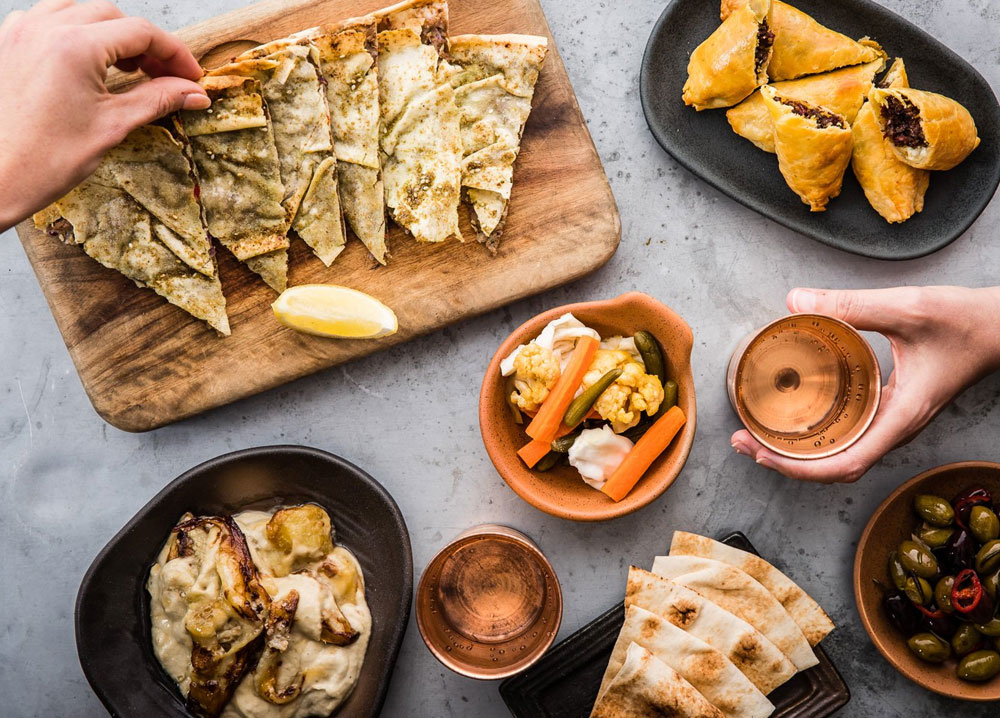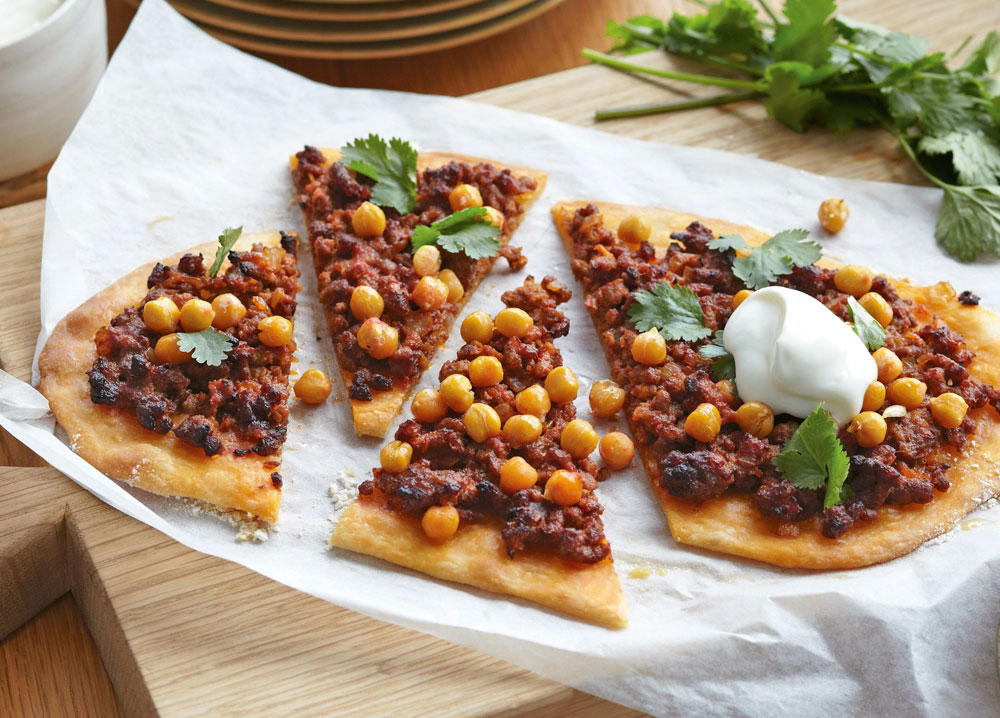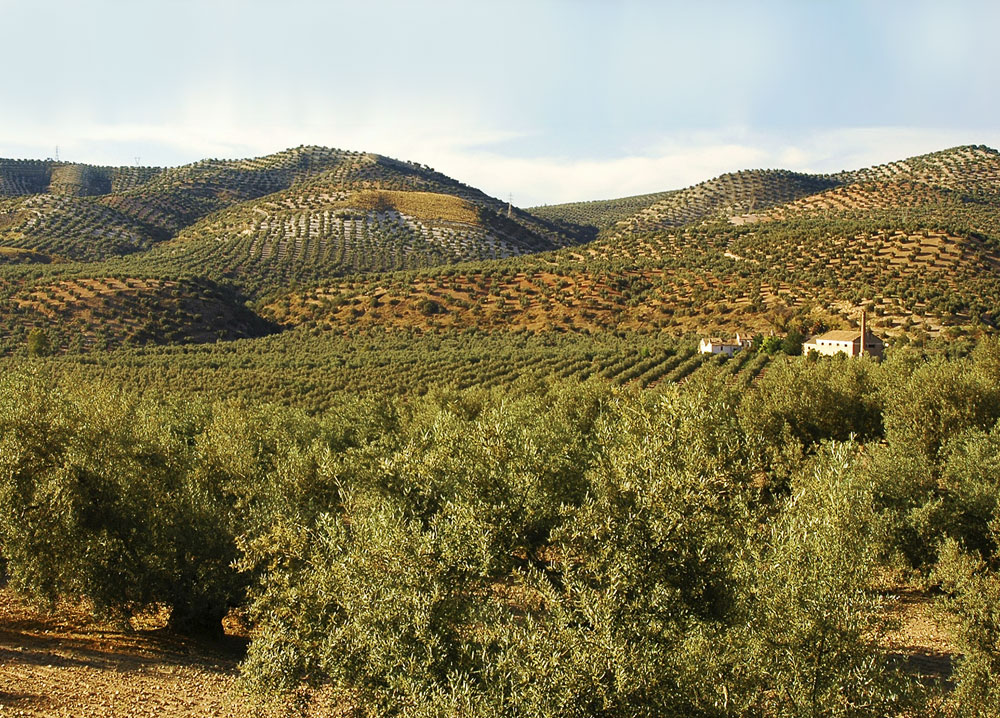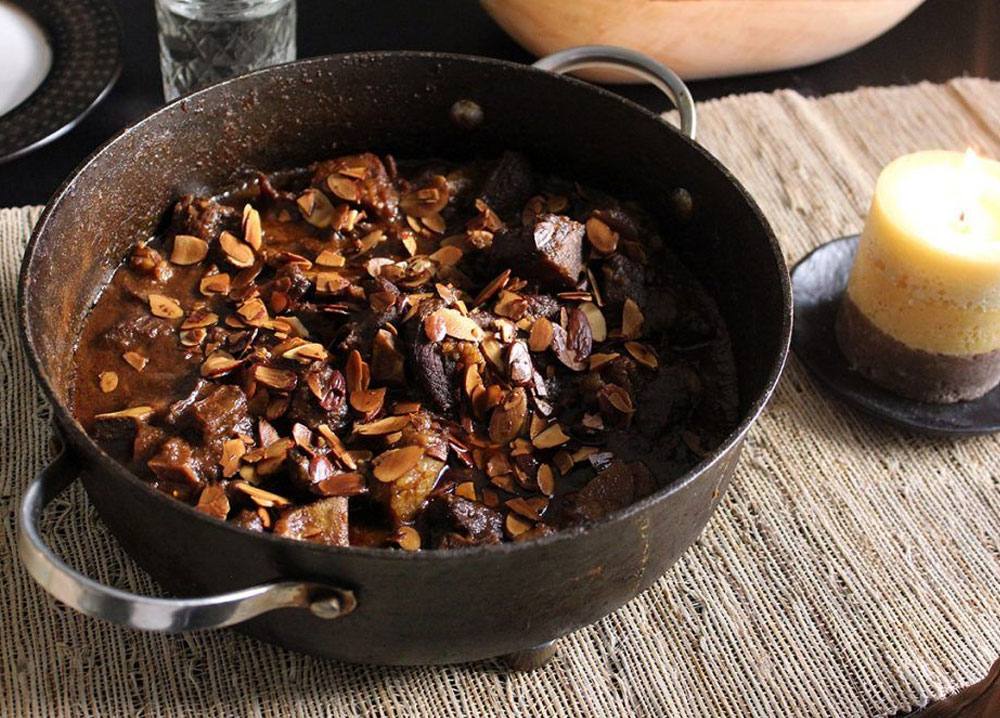Middle Eastern Origin of Your Food

In the 9th century, Abbas ibn Firnas (from Arabia) was the first person to make a real attempt to construct a flying machine and fly. Not only Arabs are responsible for many history changing inventions but they’ve also influenced much of the food you can find in your household.
Arabs introduced Europeans to rice, sugar cane, cotton, eggplants, hemp, artichokes, asparagus, mulberry, oranges, lemons, melons, pistachios, wheat, and apricots and developed syrups, sweetmeats, essences and perfumes. Arabs are credited with inventing the process of making caramel (Encyclopedia of Junk Food and Fast Food By Andrew F. Smith). When Arabic armies conquered Sicily during the 9th century, it marked the beginning of a new palate as well as new leaders.
So, we’ve decided to look into common European and Australian meals that have curious Arabic origin you may have not known about.

Middle Eastern … Pizza?
Bread has been the primary food staple in the Arab-Muslim world. Great importance was placed on maintaining the grain supply so that no food riots were encountered in middle eastern countries.
In most places, bread is made with wheat, softened with olive oil and eaten with vegetables such as onions, garlic and eggplant. Some people think pizza may have been inspired by Middle eastern round bread.
Other commonly Arab staples are barley, lentils, rye and wheat with traditional spices include fennel and fenugreek.
Food lovers, this is your time! With one of our delicious tours, you can go on a mid-morning walking tour to markets, groceries and ice-cream shops in Rome – enjoy pizza with a mortadella tasting(fried rice-ball), and pasta while contemplating the origin of the food you are consuming.

Arabian Delicious Oils
Many foods associated with the Mediterranean are also related to the Middle Eastern and Arab origins, including olive oil.
Arabs tend to like olive oil that is green and sweet. In many Arab countries, people use olive oil in cooking and as a hair tonic (a common homemade remedy!).
Chickpeas are another staple of the Middle East. They are the primary ingredient of falafels and hummus, perhaps the two best-known Middle Eastern dishes, which also don’t go without delicious olive oil.
In modern day Spain, Islam made its appearance in the Iberian Peninsula in 711, with the arrival of Tarik, from North Africa. From then until 1492, when he surrendered Granada to the Catholic Monarchs, the Muslim civilization remained in Peninsular lands. During those eight centuries, the Muslims founded a new state which they named Al-Andalus, which extended from the Andalusian coasts in the South right up to the middle of the Peninsula. The arrival of the Islam world to Iberian lands sparked a revolution that affected the society, urbanism, the culture and the economy. The agricultural crop that developed the most in the Analusian era was the olive tree. Muslim scientists were aware of the multiple beneficial properties of olive oil for health and were one of the first people to introduce multiple use of oil, including dietary, cosmetic, medicinal, nourishment for plants and raw material for woodwork.
Next time you are dipping your fluffy white bread into an aromatic olive oil somewhere … maybe in Spain or Greece, take a moment to consider the origin of this delicious food.

Traditionally Arab Origins
A good variety of what the Arabs used in their cooking, from spices, herbs, vegetables, fruits, and prepared dishes, spread to the other parts of Europe, then later to the Americas.
Some dishes even continue to retain their Arabic names as in the case of Mexico’s albondigas, a simple soup base is made with sautéed onions, garlic, broth, and tomatoes, from the Arabic al-bunduqiya, the English mawmenny, a dish eaten in later medieval England, made with spice and almost always with boneless meat from poultry, from al-ma’muuniya and Brazil’s kiba, beef croquettes, from its Arabic ancestor, kubba.
Today in the European languages many foods and spices still carry their Arabized Asiatic names such as sumac, tarragon, and sesame. And this linguistic contribution continues into our times.
Under the Umayyads, the first ruling dynasty of the Islamic Empire between 661-750 CE, Damascus became the capital of a realm that stretched from China in the east to the heart of France in the west. For a hundred years the wealth of this vast domain enriched the city and it became the most illustrious capital on earth with a celebrated cuisine. And today, the culinary art of the city is alive and thriving. There is no doubt that Eternal Damascus, where Alexander the Great and the Arab caliphs once strolled has, after centuries of civilisation, developed one of the finest of the world’s kitchens, which is now tasted in many national cuisines around Europe, as a part of their own food.
Next time you are strolling down a European food market or enjoying a delicious meal on your tour, reflect back on the weight of cross-cultural contaminations that are making our food experiences so diverse and unforgettable today.
It’s fascinating how many common foods we consume every day have made it to us through the centuries of history all the way from Middle East – this makes any cooking and eating experience so much more enjoyable.
If you’d like more information regarding Food Tours, please don’t hesitate to contact our team on 1800 242 353.
